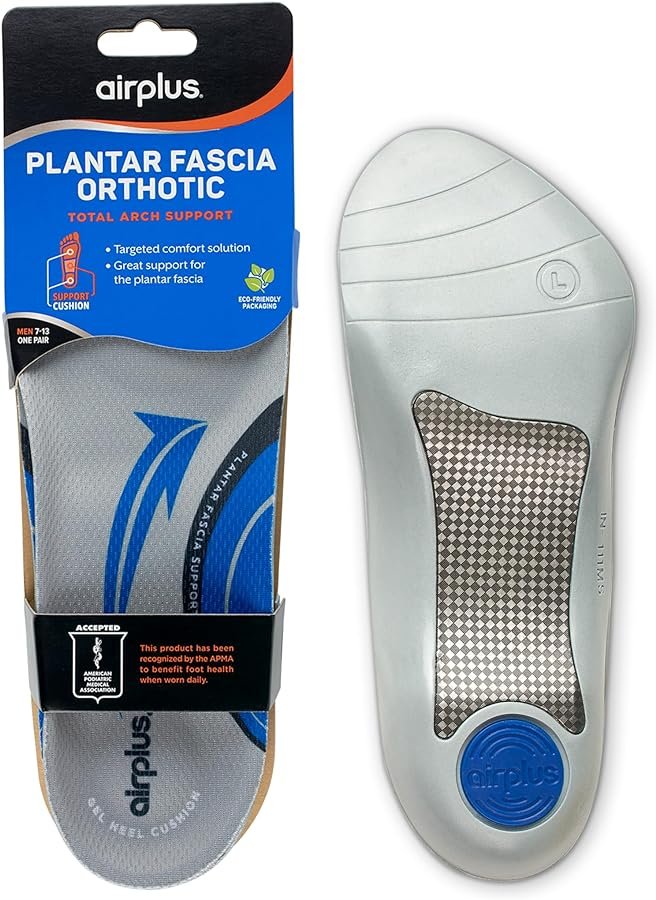Your shoes matter more than you think.
I used to care about the style of my shoes a lot. As a kid, growing up in public school, I always wanted to have stylish, different, and mostly functional shoes (K-Swiss anyone?). As time went on, my tastes may have changed slightly, but the premise stayed the same- style and comfort mattered more than anything else.
Fast forward to my late twenties- I started to develop some very annoying foot/heel pain. If you’ve ever had plantar fasciitis, you know what I’m talking about and how debilitating it can be. Surprisingly, it affects about 10% of the general population- which means it is not just an athlete’s injury.
I started looking up remedies and it seemed that the conventional wisdom was to put insoles in your shoes. Makes sense at first glance- insoles provide arch and heel support which decreases the amount of strain in those areas, problem solved, right? Well not quite…
Fortunately for me, as I was experiencing this pain and researching solutions, I had begun looking at health from an ancestral perspective. Something about adding more to my already thick-soled shoes didn’t seem right. The more that I researched it, the more I realized that insoles don’t address the root cause of the pain. Similar to most pharmaceutical drugs, they address symptoms but do nothing to address what’s causing the problem. This can lead to reliance on the product/drug for the rest of your life- great for insole companies and Big Pharma- not for you.
If you’ve read any of my previous posts, you know that I believe the human body’s design is hard to beat. That fact is on display in the human foot. Each foot contains over 200,000 nerve endings and 26 bones which is more than a quarter of all the bones in the entire body.
Our feet are incredible and meant to do a lot of things- our toes are supposed to grip, feel, and help us balance. The mid-foot and ball of our foot propels us forward when we walk or run. Our arches are meant to flex and bear weight (think about bridge designs). Our heels have cushion and fewer bones which means they can handle initial contact well (when walking).
As I researched solutions to plantar fasciitis, I learned that the shoes I’ve been wearing my whole life may be the main cause of my problem. And on a much larger scale, many foot, knee, hip, and back problems may actually be the result of wearing modern shoes.
The vast majority of shoes are engineered for maximum comfort and style. They don’t take into account the natural shape and capabilities of our feet- they lock them in a box with minimal space, feel, and flexibility, which leads to a whole host of foot, knee, hip, and back problems over the long run (pun intended).
Here’s a quick overview of the bad things happening when you wear a typical shoe (yes, even your expensive running shoe)-
Wide toe box vs. narrow toe box
Narrow toe boxes- The toe-box is the area of the shoe surrounding your toes. In most shoes, the toe-box is too narrow. That forces your toes into an unnatural, squished together shape. Over time, that becomes permanent. When your toes become squished like that, they cannot grip, balance, and work the way they were meant to.
Take your shoes and socks off for a moment and look at your toes. Are they all squished together? I’m guessing the answer is yes. Folks, that ain’t normal!
Thick cushioned heels- These foam wedges were placed under the heel decades ago by sneaker companies as a way to help absorb shock. In reality, cushioned heels lead people to walk and run improperly. Our heels are not meant to be further off the ground compared to the rest of our foot. That forces people to hit the ground with their heel first and not properly roll to the rest of the foot. It’s the equivalent of putting your brakes on as you move forward. You can get by with improper heel striking when walking, but it’s very damaging over time when you run that way.
Try walking around barefoot on a hard surface and intentionally put your heel down first. Your feet are going to start hurting quickly. Alternatively, try walking barefoot allowing your heel to briefly touch then roll to the mid foot. You’ll feel how much more smooth the experience is. That’s because your mid-foot and arches are meant to absorb a lot of the shock and help propel you forward. When you heel strike without proper mechanics, all of that shock is sent up through the leg to the knees, hips, and lower back. Which leads to all types of chronic pain over time and can ultimately lead you to live a more sedentary life. This short video is worth a watch to understand the different ways to walk.
Shortened achilles tendon and tight calves. With modern shoes, these tendons and muscles are not getting the range of motion they were meant to. This leads to decreased function, tightness, and weakness which leads to injury.
So what’s the solution? In a perfect world we’d be able to go barefoot a lot. When you are on grass, sand, and some dirt, walk barefoot more, but walk correctly. It’s going to take a concerted effort to retrain your body after decades of improper form.
When shoes are required on hard surfaces like cement and pavement it’s important to wear shoes that have wide toe boxes, flexible soles, and zero drop (this refers to the height difference between the forefoot and the heel).
Thankfully this barefoot-style approach is becoming more popular, so you have multiple shoe brands to choose from. All of these offer wide toe-boxes, zero-drop, and flexible soles:
Xero Shoes is currently my favorite brand. They have great everyday/performance shoes, sandals and boots.
Altra was my first zero-drop shoe. I think it’s a great shoe to start your journey to the barefoot world.to
Vivobarefoot has an awesome selection, but they are on the pricier side.
Lems has some great formal shoes for business settings.
I encourage you to get a pair a slowly start changing the way you move through the world. Your future self will thank you.




